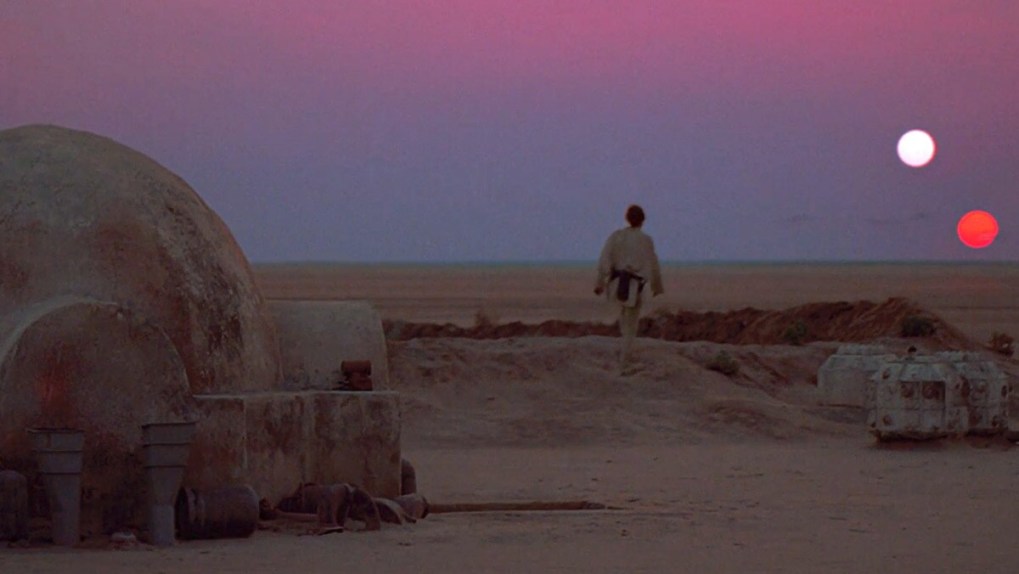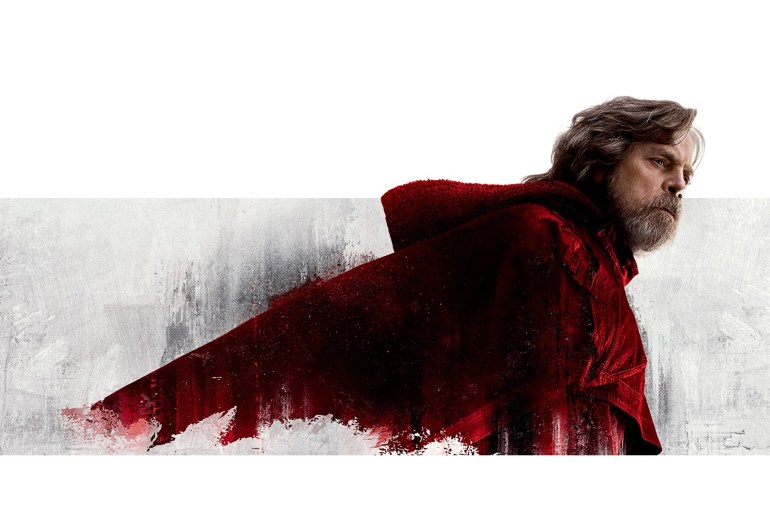Rian Johnson’s The Last Jedi is one of the most polarizing movies in the current popular culture landscape. It challenges what a Star Wars movie can be capable of. By deconstructing what we expect from Stars Wars in both character and plot, Johnson explores themes of failure, sacrifice, and how our personal narratives conflict with reality. That last one is what I’m exploring today.
Each character in the film offers a perspective that is challenged, and their respective character arcs either redeem or damn them. It was inevitable that this kind of reinvention would take place. The Force Awakens tried to restore the pop-myth of Star Wars after the prequels; its plot structure is remarkably similar to the original Star Wars, which was almost certainly intentional. The iconography fans were familiar with remained, but things were tweaked just enough that audiences wouldn’t feel cheated. So we got black robes and red lightsabers, handsome men with blasters, and the same scoundrel and giant dog with an ammo belt we’ve grown to love.
Rey is the perfect protagonist for that formula. Her role as the audience analog fits the modern audience better than Luke because we know the franchise. Luke had to learn what the Jedi were. He had to learn the intricacies of the universe and so did we. It was still fresh. In contrast, Rey is fully aware of the Star Wars legacy. Even on a planet as remote as Jakku, she knows of Luke Skywalker, the great Jedi, Han Solo, the man that completed the Kessel Run in less than “fourteen” parsecs, and the galactic turmoil that’s raged on for decades. Her questions about the world and herself are the ones we share with her. Where is Luke? Why is Rey special?
After The Force Awakens released and everyone looked to the horizon for the sequel, Rian Johnson was given nearly full creative freedom to tell the story he wanted. The story he sought to make took a wrecking ball to fan expectations. We soon find Rey disappointed with those answers proposed in the first film. Luke is an old curmudgeon that doesn’t want to help anyone. Her parents? Nobodies. She’s not special at all, just lucky. These questions carried her character’s motivations and the audience’s interest in her. In learning these truths, Rey pushes forward and grows beyond the answers that would’ve held her back. If Luke was a superhero that could save everyone, she couldn’t grow. If her parents were special, then she truly wouldn’t be. Kylo Ren and the power of the dark side tempt her throughout, and she doesn’t entirely mind those…temptations. To misquote Johnson, “They hold hands, the closest Star Wars will get to a sex scene.” But in the final confrontation, she has her priorities straight and she knows she doesn’t need the answers the dark side can provide.
Most audience complaints center around the side stories of Poe, Finn, and Rose. What’s important to realize about these scenes are how much they try to be like the original Star Wars movies, and how much they also change the conditions of the core conflicts to add more depth. People don’t like an entire movie where the good guys are being chased? Empire does the same thing. The setpiece with those weird deer horses? Not as weird as Gungans or Ewoks fighting a war against trained killers.
Poe’s personal arc is about transformation. His brand of heroism was fantasized in the Star Wars universe: shoot first, think later. To Poe, heroism was bravery. His arc forces him to realize victory is won with care and caution.
The losses the Resistance faces are frighteningly real and visceral, something never really seen in a Star Wars film outside of Rogue One. We see the price the Resistance soldiers pay, and how important it is when they are lost. These emotional stakes ground the fantasy. Poe himself changes from a two-dimensional pilot to a character rich with personality and agency. He turned into a leader that is capable of succeeding Carrie Fisher’s Leia. Finn and Rose learn the complexities of these wars. Finn tries to escape and is roped into helping the Resistance, but when he sees the Canto Bight and realizes that the galaxy’s economy relies primarily on war profiteering, he knows he can’s just run away. To Rose, this fact justifies her faith in her actions and what she’s doing. She consistently suffers from this. She loses her sister, gets betrayed by DJ, and almost loses Finn.
DJ, meanwhile, serves as the foil. DJ’s moral philosophy remains concrete throughout-save for the one caveat-”maybe,” delivered just before he leaves-even as the other characters call him names and insult him to his face. DJ sees the social cogs of the war machine and chooses to abandon illusions. “They blow you up today, you can blow them up tomorrow.” If yesterday and tomorrow are all the same, don’t join.
Luke Skywalker would agree with DJ. Luke’s disillusionment may confuse some, but Luke had the misfortune of seeing the cycle of violence from a spiritual and personal perspective. He was a myth, and his failure to live up to that myth ruined the galaxy. He witnessed the Force violently re-balance itself at the cost of everything he worked to build; his solution to all this cosmic shuffling? Don’t join. Despite what many believe, exile is very common for a failed Jedi. The stoicism they must uphold during the greatest moments of failure is seen time and time again, even in Yoda and Obi-Wan.
Again, these dramatic moves aren’t actually meant to upset the audience. Sure, maybe surprise, but these are efforts by Johnson to elevate the simplistic material of our nostalgia. Creating these complex characters from these beloved archetypes evolves the audience’s own understanding of the universe. More importantly, it evolves the characters and plot in a franchise famous for cyclical stagnation to prevent the power of the story from failing us.
Which brings us to Kylo Ren, who remains one of the best characters in the current trilogy. If The Last Jedi was all about betraying the past, Kylo Ren is the poster boy. In The Force Awakens, Kylo Ren was the only true subversion of expectations. This was because he faces the real burden of legacy, both in the Skywalker family in the story and as an audience analog to Darth Vader. This was a brutal burden, and it left him with a conflict that confuses many viewers. Remember, all of his heroes and legends and father figures have failed him. All of these narratives we the audience buy into personally fail him as a character, including the vindictive Snoke. By the end of the first film, our expectation-and Snoke’s- that he will become the next big bad guy are shattered. Ren was a man in the darkness tempted by the light inside of him, and after everything that happened in The Last Jedi, he has all but given up hope and now seeks to tear down everything that the franchise has ever built. This is entirely new for Star Wars, and it marvelously heightens the drama. Evil and darkness no longer are just abstract concepts with some cool Force lightning. They’re raw, reasonable motivations.
Yet the character who changes the most from the start of the film to the end is Luke himself. At the climax, he realizes the power of believing in legends. He realizes the power of a story. Reality may fail; it can disappoint and it can ruin, but the stories we tell ourselves are so powerful that they provide new hope.



